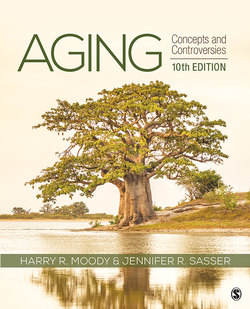Читать книгу Aging - Harry R. Moody - Страница 45
На сайте Литреса книга снята с продажи.
Explaining Patterns of Leisure
ОглавлениеA study of activity patterns in old age sheds interesting light on different theories of aging, such as activity theory, disengagement theory, and continuity theory (Toepoel, 2013). The Canadian Longitudinal Study of Aging found that most Ontario residents ages 45 to 85 engage in familiar activities and maintain stable activity patterns, as continuity theory would predict (Singleton, Forbes, & Agwani, 1993). However, the Canadian study also found that education and income are big factors. Retired people who have more choices because they have more resources are also likely to change their patterns of activity more often.
We also find some support for the idea of disengagement as people age, but not as a global generalization or stereotype. Disengagement, in other words, is not a universal pattern, but is highly selective, an example of selective optimization with compensation (Baltes & Baltes, 1990). As long as leisure activities remain accessible, people will go on doing what they find worthwhile and meaningful as long as they can. When physical impairments impose obstacles, most people adapt to optimize whatever resources they still have. Most people do not simply disengage altogether from meaningful activities.
Other explanations for the decline in leisure participation can also be found. For a segment of the older population with limited income, travel or cultural activities may be economically out of reach, perhaps an example of how social inequality accumulates over the life course and affects outcomes in later life (Ferraro & Shippee, 2009). But those with limited income may pursue activities outside the marketplace, for example, informal socializing with others. Another cause for constricted activity is declining health or age-related decline in vision, which might limit participation in fitness or sporting activities as well as driving. Even among those who remain healthy, loss of companions for leisure activities can be a limiting factor. As a result, decline in leisure, as we might expect, is most severe among the oldest-old.
In conclusion, it is important to note here that recent Pew Research Center data suggest that older adults spend, on average, half of their waking hours alone, not including time spent on personal care (Livingston, 2019). As such, participation in leisure activities may be an important buffer between older adults and loneliness and isolation.
